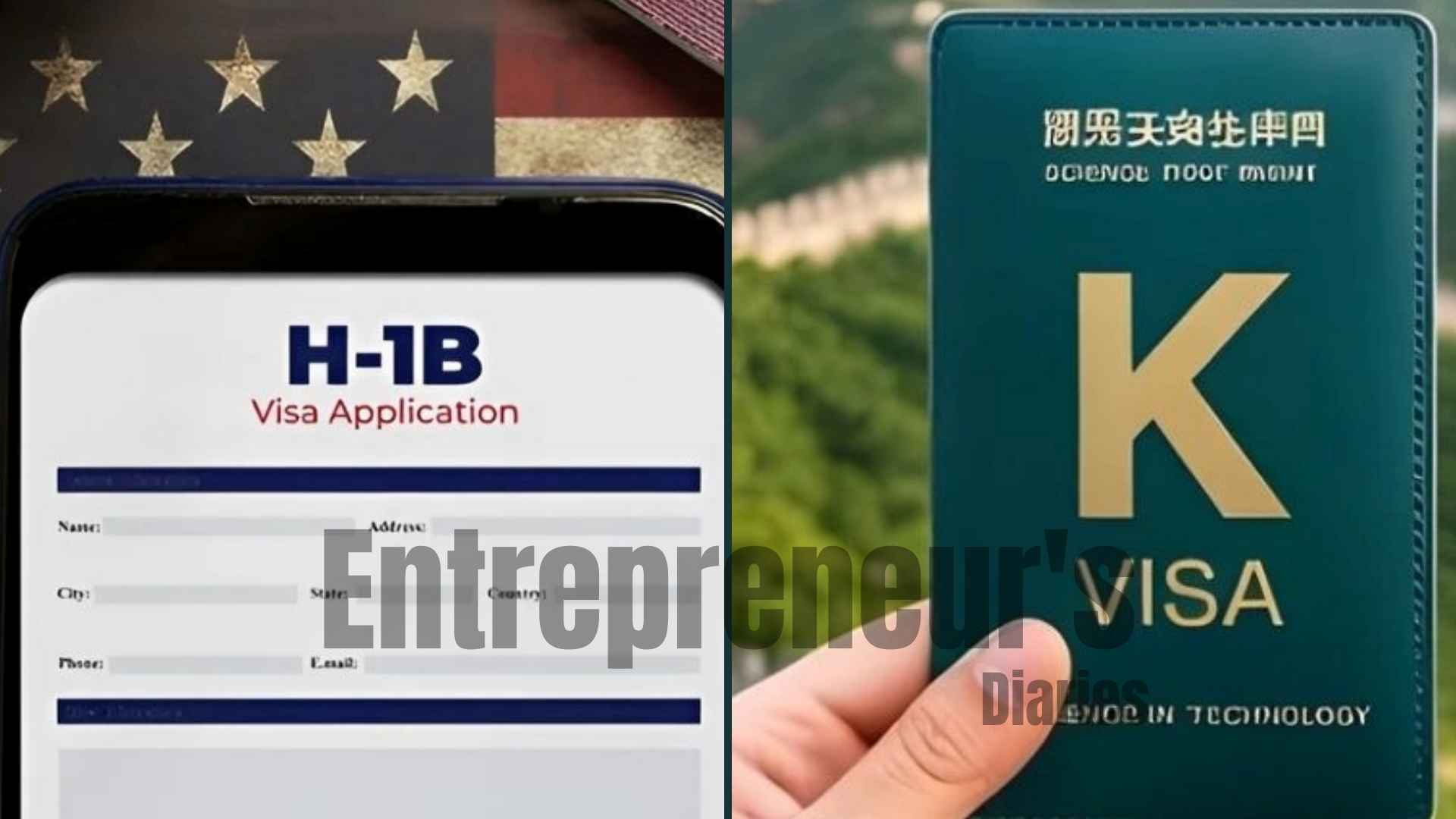Beijing, September 22: China’s surprise rollout of the K visa, set to take effect October 1, 2025, is more than just a new immigration category. It represents a direct pitch to the same global science and technology talent pool that for decades has been pulled toward Silicon Valley and American research hubs through the H-1B visa. The timing is not accidental. Just days ago, Washington imposed a $100,000 fee on new H-1B petitions, a move that has already rattled employers and applicants alike.
China’s K Visa: A Strategic Bet on Youth and Flexibility
According to China Briefing, the K visa is targeted at foreign graduates in STEM fields from recognized universities, as well as young professionals working in education and research. Unlike most existing Chinese work visa categories, it strips away one of the most persistent barriers: the need for a sponsoring employer or invitation.
In practice, that means a young AI researcher from Berlin or a biotech PhD from Nairobi could apply to enter China independently, pursue research collaborations, or even launch a startup. The visa is framed to cover not just employment but also cultural and scientific exchanges, entrepreneurship, and business activities. KPMG notes that while the precise definition of “young” remains vague, the policy intent is clear: lure early-career talent before they get locked into Western corporate pipelines.
Duration and entry rules are also expected to be looser. Multiple entries, longer stays, and fewer bureaucratic hurdles are being promised, though China has yet to publish the final rulebook. Analysts see it as an effort to counteract China’s longstanding reputation for rigid and opaque immigration processes.
The U.S. H-1B: A Workhorse With New Weight
Across the Pacific, the H-1B visa remains the dominant gateway for foreign tech workers, particularly from India and China, into American companies. It has been in place since 1990 and is deeply entrenched in industries ranging from IT consulting to healthcare and finance.
But the system has grown more restrictive and costly. The U.S. imposes a strict annual cap of 85,000 visas (65,000 regular plus 20,000 for advanced degree holders). Oversubscription has led to a lottery that many applicants never clear. Even for those who do, the visa binds them tightly to their sponsoring employer. Changing jobs requires new petitions, which often reset timelines and create legal risk.
The recent decision to impose a $100,000 petition fee, announced in a September 19 presidential proclamation, dramatically raises the cost of hiring foreign workers. According to Boundless Immigration, the fee is intended to discourage over-reliance on foreign labor, but business groups warn it will hollow out America’s access to global STEM talent. Some exemptions are reportedly under discussion, according to AP News, but details are not final.
That said, the H-1B has one critical advantage: it permits dual intent. Holders can pursue permanent residency while working in the U.S., creating a direct bridge to a green card. The visa is also widely recognized, backed by legal precedent, and embedded within the infrastructure of American corporate hiring.
Cost, Control, and Career Trajectories
The starkest contrast between the two systems is structural. China’s K visa favors individual mobility, lowering the barrier to entry and allowing talent to find their own fit once inside the country. The U.S. H-1B, by contrast, is employer-centric, ensuring companies retain leverage but limiting worker flexibility.
Fees further illustrate the divergence. China has not yet published exact costs, though observers expect them to be modest compared to the new American price tag. The U.S. system now represents one of the highest upfront immigration costs globally, putting pressure on both employers and applicants.
For young researchers or early-career engineers weighing options, the Chinese offer may feel liberating. For mid-career professionals seeking stability and a long-term home, the American pathway, despite its costs and restriction,s remains attractive due to its alignment with permanent residency.
Unknowns and Watchpoints
Several pieces of the puzzle are missing on China’s side. The government has not disclosed renewal rules, duration caps, or whether K visa holders can bring dependents. Nor is it clear how China will enforce its “young talent” requirement or whether a cutoff age will be applied strictly.
On the U.S. side, clarity is still needed on who will be exempt from the new $100,000 fee. National interest roles, universities, and certain non-profits may receive relief, but the scope is still under debate.
The Bigger Picture
This moment highlights an unusual inversion. For decades, the U.S. positioned itself as the natural magnet for global STEM talent, while China’s restrictive system discouraged inflows. With the K visa, Beijing is testing whether loosening its grip at the entry point can shift the balance. At the same time, Washington’s steep fee hike risks pricing out precisely the kind of innovators it once competed to attract.
The final verdict will depend not just on visa terms but on the surrounding ecosystems: quality of research institutions, freedom of inquiry, living standards, and integration opportunities. Talent moves for more than paperwork. Still, in the space of a single month, the two largest economies have redrawn the visa landscape for the next generation of scientists and technologists.
Connect With Us On Social Media [ Facebook | Instagram | Twitter | LinkedIn ] To Get Real-Time Updates On The Market. Entrepreneurs Diaries Is Now Available On Telegram. Join Our Telegram Channel To Get Instant Updates.
Isabella is a global business journalist and former McKinsey analyst from Brazil. She brings sharp insights on economic shifts, policies, and founder journeys from around the world.






